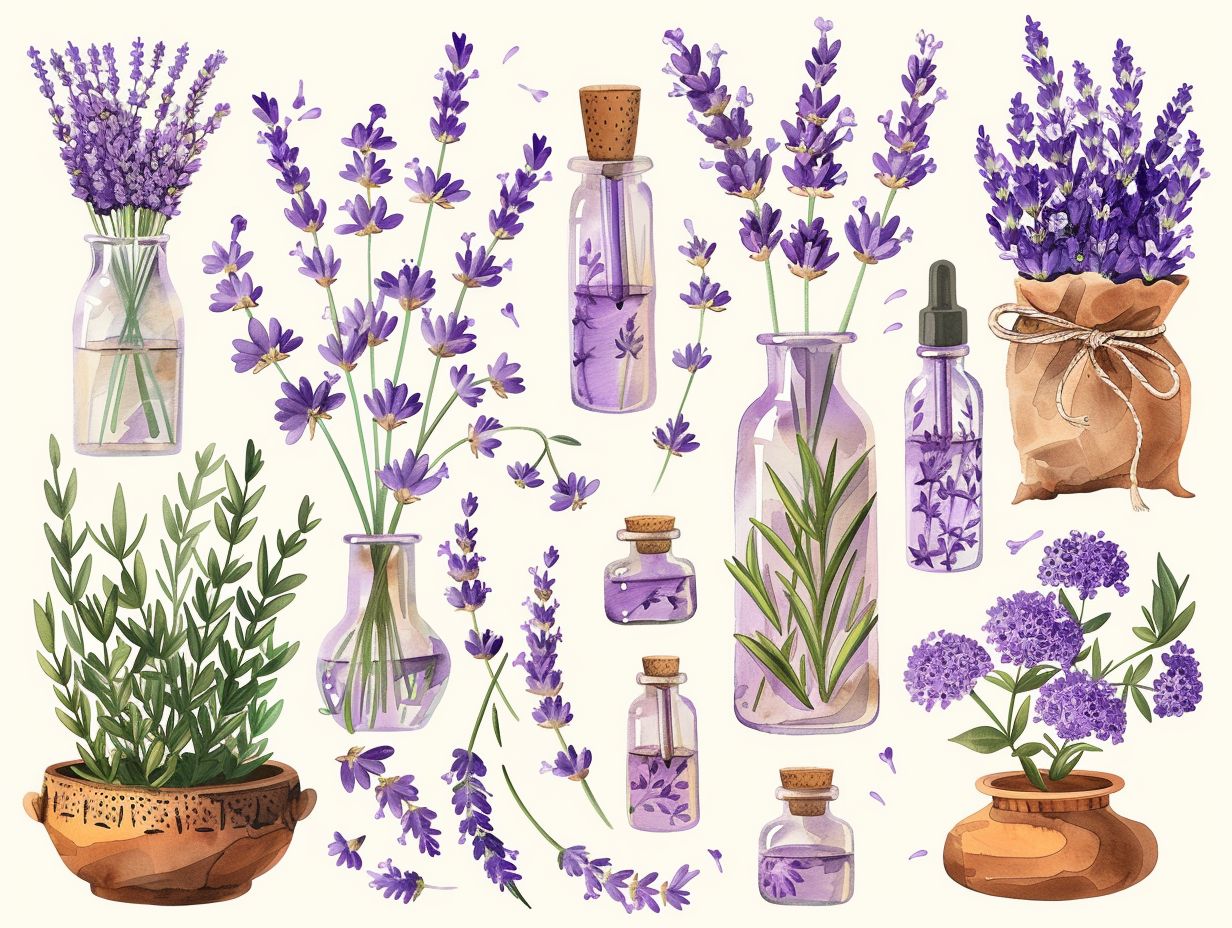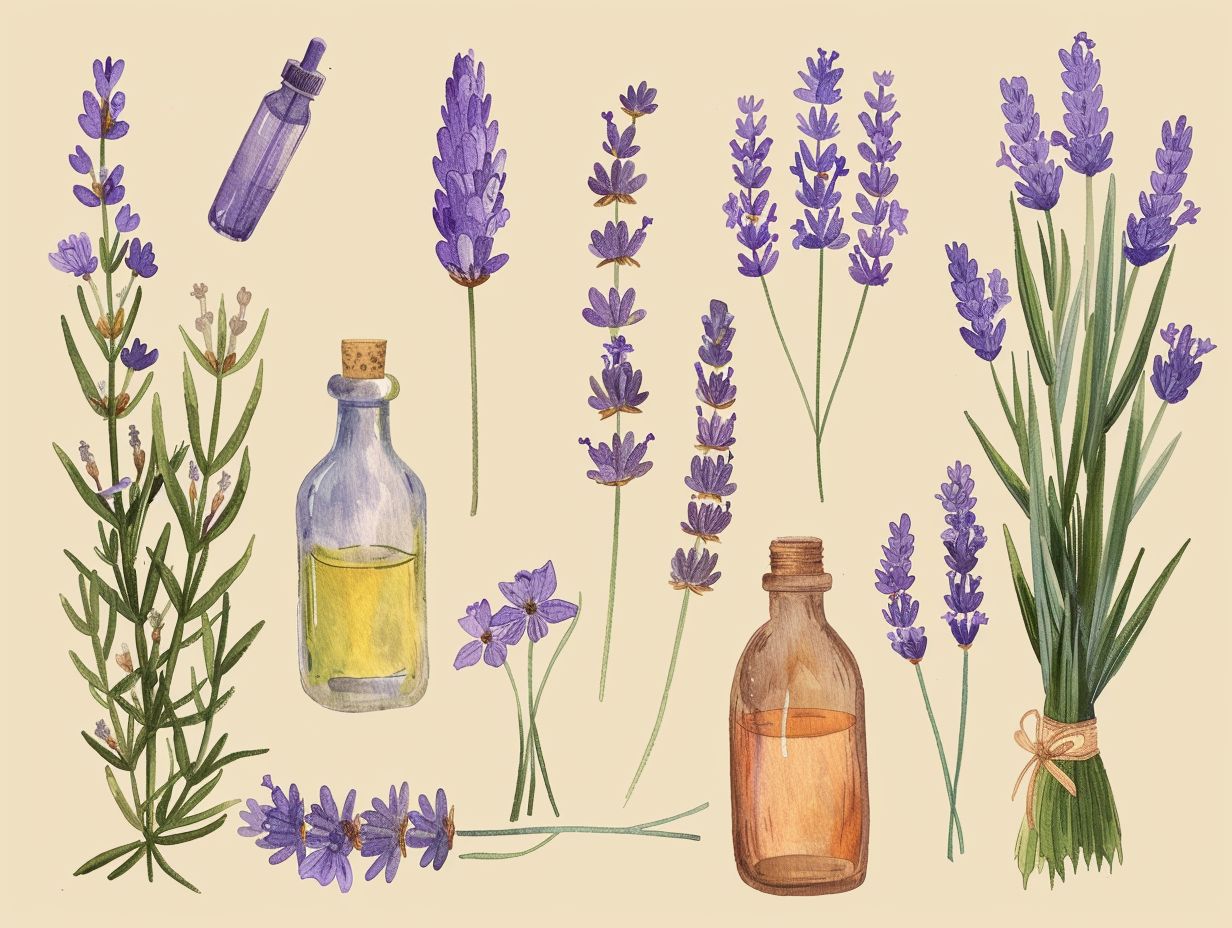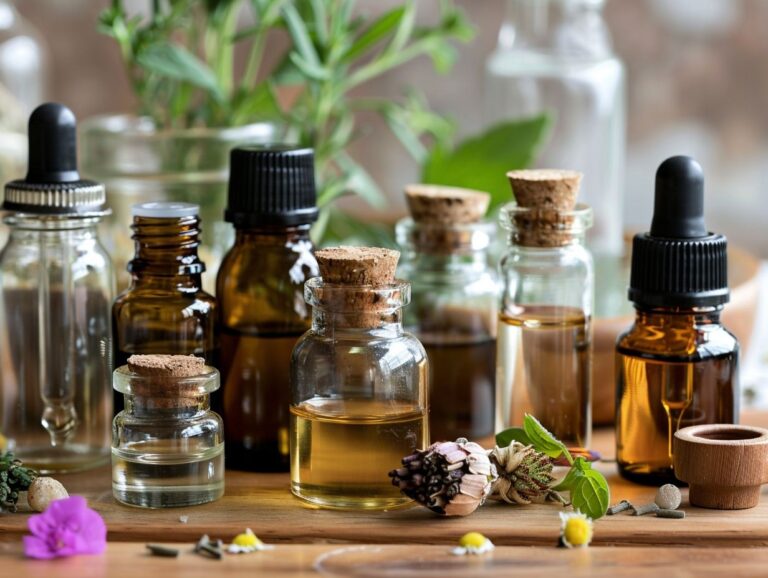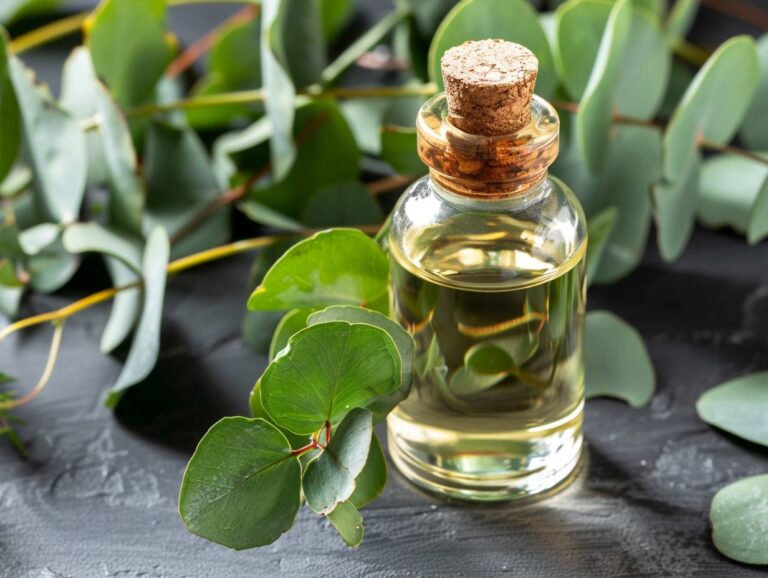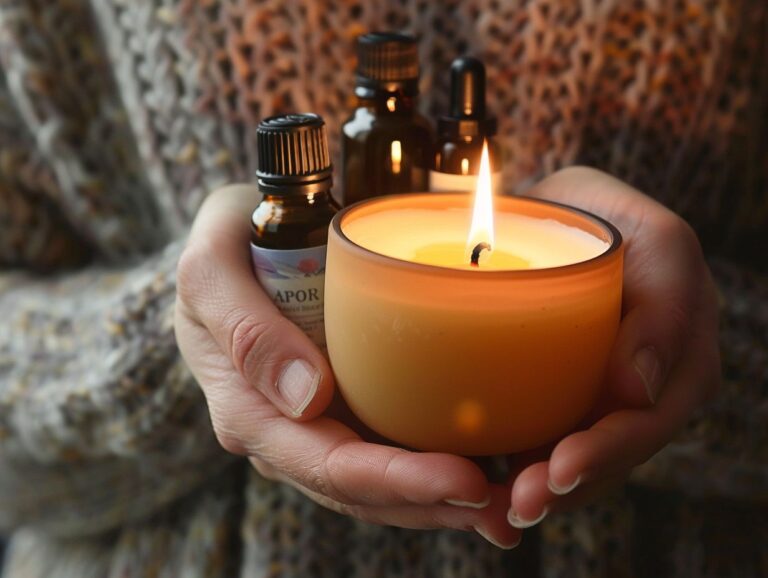What Kind of Lavender is Used for Essential Oils
Curious about the world of essential oils and the benefits of lavender oil?
We explore the different types of lavender essential oil, including Lavandula Angustifolia, Lavandula Intermedia, and Lavandula Stoechas.
Discover the characteristics of each type, how lavender essential oil is extracted, its benefits, safety precautions, and various ways to use it, such as aromatherapy, topical application, and ingestion.
Key Takeaways:
What is Essential Oil?
An essential oil is a concentrated hydrophobic liquid containing volatile aroma compounds from plants. These oils capture the plant’s scent and flavor, or ‘essence,’ hence the name ‘essential’ oil.
Extracted through various methods such as steam distillation, cold pressing, or solvent extraction, essential oils are widely used in aromatherapy, skincare, and perfumery, among other industries, due to their potent therapeutic properties.
Research suggests that essential oils not only possess antimicrobial and antioxidant qualities, but they can also improve mood, reduce stress, and promote relaxation when diffused or topically applied.
What is Lavender Essential Oil?
Lavender essential oil is derived from the Lavandula angustifolia plant, known for its therapeutic properties and soothing aroma. It contains key chemical constituents like linalool, linalyl acetate, and camphor.
These components contribute to the oil’s relaxing and calming effects, making it a popular choice in aromatherapy and skincare routines. In aromatherapy, lavender essential oil is often used to promote relaxation, reduce stress, and improve sleep quality. Its versatile nature makes it suitable for various skin types, offering benefits such as hydration, soothing irritation, and promoting overall skin health.
What are the Different Types of Lavender Essential Oil?
Lavender essential oil comes in various types, each with its distinctive characteristics and uses. Some common types include English lavender, French lavender, and Lavandula stoechas.
English lavender, scientifically known as Lavandula angustifolia, is popular for its sweet floral aroma and calming properties, making it ideal for relaxation and promoting sleep. French lavender, or Lavandula x intermedia, has a sharper, more herbaceous scent and is often used for its antiseptic and pain-relieving qualities. On the other hand, Lavandula stoechas, also called Spanish lavender, offers a more intense fragrance with hints of camphor and is valued for its respiratory support and insect-repelling abilities.
Lavandula Angustifolia
Lavandula angustifolia, commonly known as English lavender, is a popular choice in aromatherapy due to its delicate fragrance and therapeutic benefits. Its botanical name signifies the narrow leaves characteristic of this lavender species.
English lavender is revered for its soothing properties that help alleviate stress and promote relaxation. Its aroma is described as floral, herbaceous, and slightly sweet, making it a versatile essential oil for creating calming blends. In skincare, Lavandula angustifolia is valued for its ability to soothe skin irritations, reduce inflammation, and support overall skin health.
This lavender species is also known for its antimicrobial properties, making it a common ingredient in natural skincare products. Its essential oil is often used in diffusers, massage oils, bath salts, and homemade beauty formulations due to its gentle yet effective nature.
Lavandula Intermedia
Lavandula x intermedia, known as French lavender, is a hybrid species that exhibits a unique blend of esters and other chemical constituents, contributing to its distinct aroma and therapeutic properties.
This hybrid species, often referred to as Lavandin, strikes a balance between the delicate scent of Lavandula angustifolia and the robust nature of Lavandula latifolia. Its complex chemical makeup includes a high concentration of esters, such as linalyl acetate, known for their calming and anti-inflammatory properties. This makes it a popular choice in aromatherapy for promoting relaxation and soothing anxiety.
In skincare, French lavender’s antiseptic and antibacterial qualities make it a valuable ingredient in products for treating acne and minor skin irritations. Its aroma is also commonly used in respiratory health to alleviate symptoms of coughs and congestion.
Lavandula Stoechas
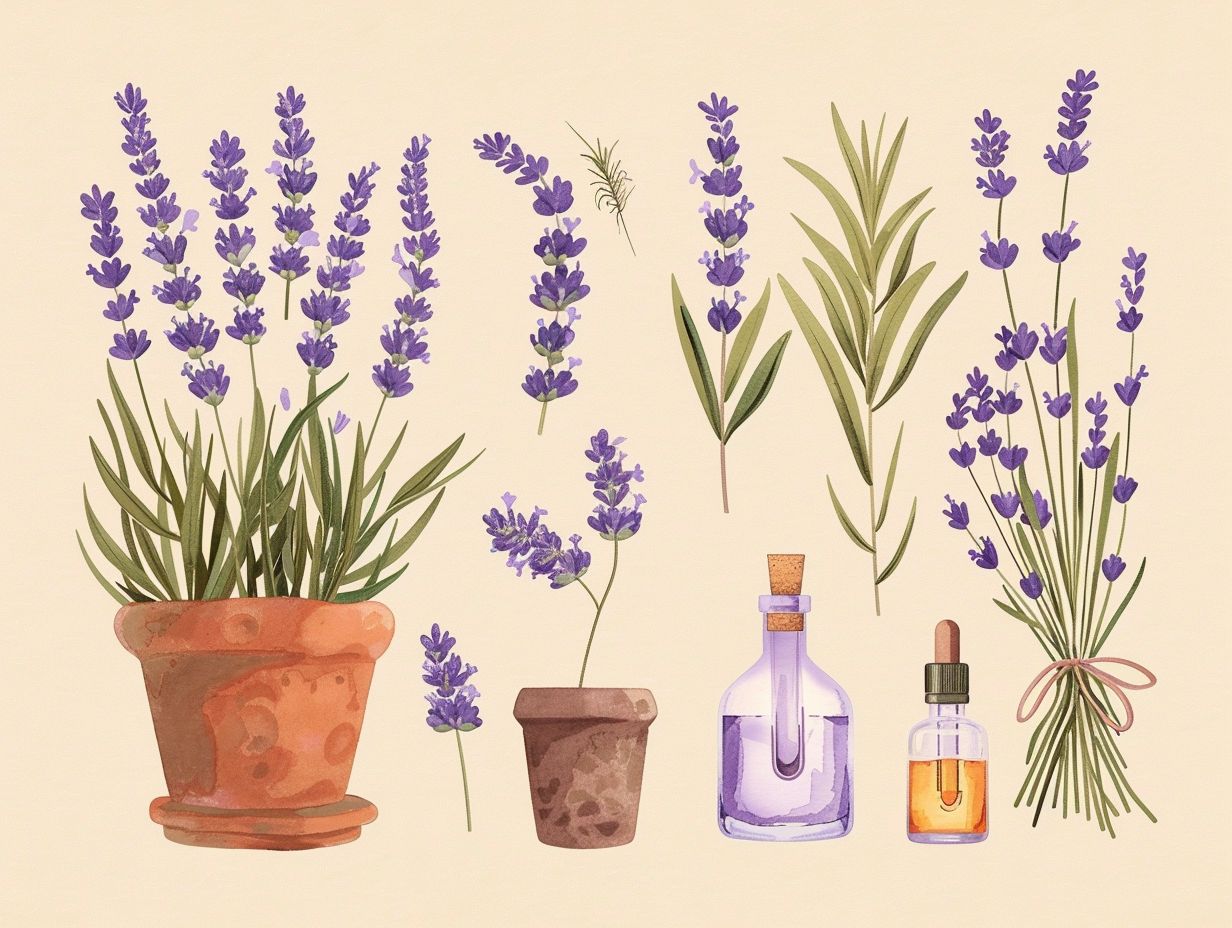
Spanish lavender, a variant of Lavandula stoechas, stands out for its vibrant purple flowers with distinctive “rabbit ears”. This species of lavender, often characterized by its compact size and ability to thrive in rocky, arid conditions, not only enhances landscapes but also attracts pollinators such as bees and butterflies.
Its adaptability makes it particularly suitable for high-altitude cultivation, where it can withstand harsh weather conditions and still flourish. With its aromatic fragrance and ornamental appeal, Spanish lavender has gained popularity among gardeners and landscapers looking to add visual interest and sensory delight to their outdoor spaces.
Which Type of Lavender is Used for Essential Oils?
Lavender essential oils are primarily extracted from Lavandula angustifolia, Lavandula x intermedia, and Lavandula stoechas varieties due to their rich aromatic profiles and therapeutic properties.
The selection criteria for lavender types used in essential oil production depend on various factors such as the climatic conditions, altitude, and soil composition in which these lavender varieties thrive. Lavandula angustifolia, commonly known as English Lavender or True Lavender, is renowned for its sweet, floral aroma and high levels of linalool, making it a popular choice for its calming and relaxing properties.
Lavandula x intermedia, also referred to as Lavandin, is a hybrid of English and Spike Lavender, known for its robust scent and higher camphor content, making it ideal for respiratory support and pain relief. Lastly, Lavandula stoechas or Spanish Lavender, distinguished by its unique winged bracts, offers a more herbaceous and medicinal fragrance, widely used for its antimicrobial and antifungal properties.
What are the Characteristics of Lavandula Angustifolia?
Lavandula angustifolia, commonly known as English lavender, is revered for its calming aroma and numerous therapeutic properties, making it a popular choice in aromatherapy and skincare products.
One of the key benefits of English lavender lies in its ability to promote relaxation and reduce stress levels. The soothing scent of this aromatic herb has been found to have a calming effect on the mind and body, helping to alleviate anxiety and tension.
English lavender is widely used in skincare routines for its healing and rejuvenating properties. Its anti-inflammatory and antiseptic qualities make it a valuable ingredient in skincare products, especially those targeted towards soothing sensitive or irritated skin.
What are the Characteristics of Lavandula Intermedia?
Lavandula x intermedia, also known as French lavender, boasts a complex aroma profile that can be analyzed through a GC/MS report, showcasing its unique chemical composition and potential therapeutic effects.
The GC/MS analysis of Lavandula x intermedia provides valuable insights into the specific compounds present in its essential oil, offering a detailed understanding of its fragrance and medicinal properties. This lavender hybrid typically contains high levels of linalool, linalyl acetate, and camphor, contributing to its distinct scent and therapeutic benefits.
With its rich chemical diversity, French lavender is widely utilized in aromatherapy for its calming and relaxing effects on the mind and body. The essential oil derived from Lavandula x intermedia is known to have anti-inflammatory, antimicrobial, and analgesic properties, making it a versatile remedy for various ailments.
What are the Characteristics of Lavandula Stoechas?
Lavandula stoechas, or Spanish lavender, is known for its beneficial effects on the skin and respiratory system, making it a versatile essential oil for various skincare and respiratory applications.
Known for its skin-regenerating properties, Spanish lavender is prized in skincare formulations for its ability to promote cell regeneration and soothe inflammation. Its aromatic profile not only enhances the sensory experience of skincare products but also offers respiratory benefits when used in aromatherapy blends.
Incorporating Lavandula stoechas into respiratory wellness products can help clear the airways, support breathing, and promote relaxation. The versatility of this essential oil makes it a must-have for those seeking holistic solutions for both skincare and respiratory concerns.
How is Lavender Essential Oil Extracted?
Lavender essential oil is extracted through various methods such as steam distillation, solvent extraction, or cold pressing, ensuring the preservation of its aromatic compounds and therapeutic properties.
Steam distillation, the most common method, involves the use of steam to separate the oil from lavender flowers, resulting in a pure and potent extract.
Solvent extraction utilizes solvents like hexane to draw out the oil, offering a higher yield but may contain traces of the solvent.
On the other hand, cold pressing involves pressing the lavender plant material to release the oil, ideal for delicate oils like citrus.
Regardless of the method, maintaining purity is crucial to retain the oil’s benefits and efficacy for aromatherapy, skincare, and relaxation.
What are the Benefits of Lavender Essential Oil?
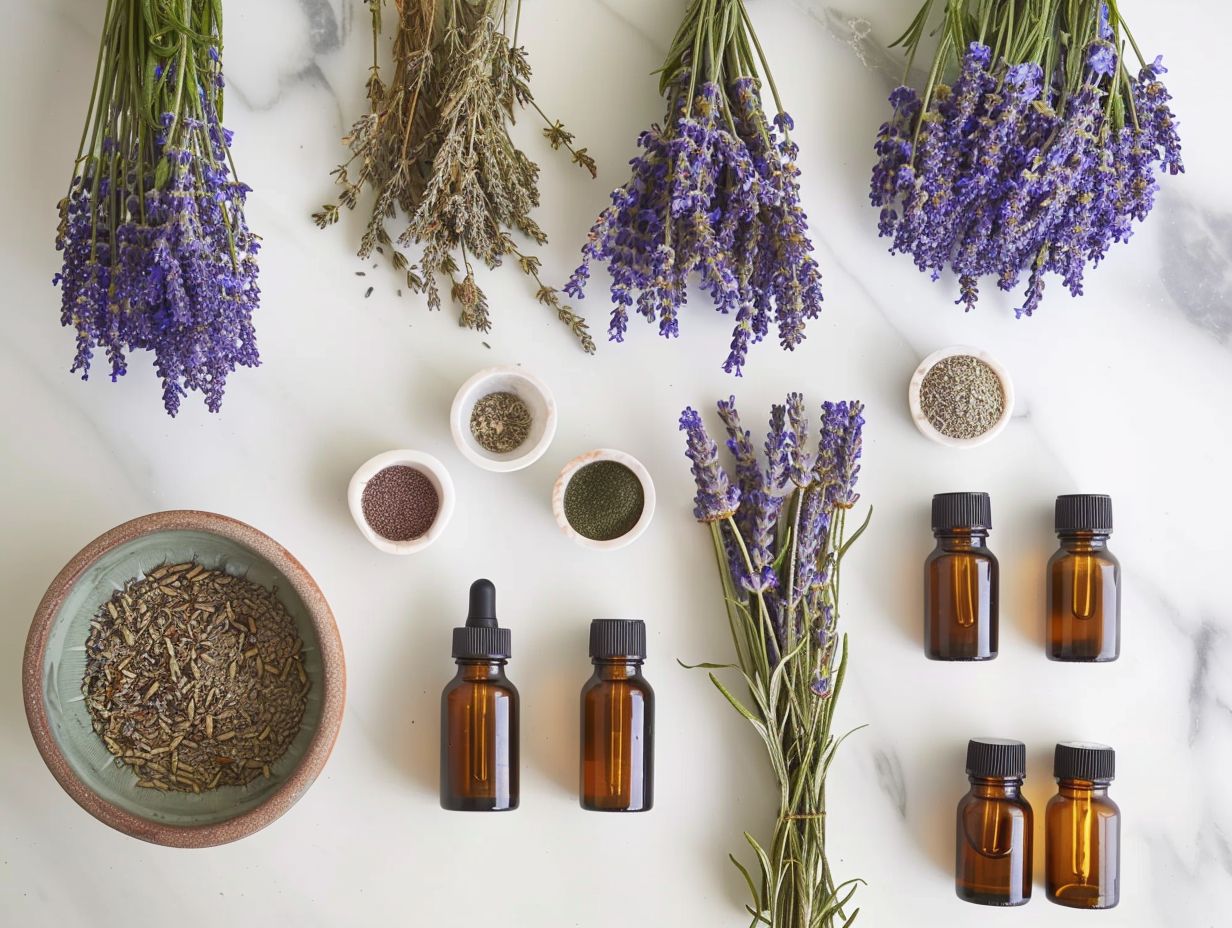
In terms of respiratory health, lavender essential oil is known for its ability to help clear congestion, soothe coughs, and support overall lung function.
In skincare routines, its anti-inflammatory and antimicrobial properties make it a versatile ingredient, aiding in healing wounds, soothing acne, and reducing redness and irritation.
For stress management, the calming aroma of lavender essential oil can alleviate anxiety, improve sleep quality, and create a peaceful ambiance.
Incorporating lavender essential oil into your daily routine can significantly enhance your well-being, offering a holistic approach to health and relaxation.
What are the Safety Precautions when Using Lavender Essential Oil?
While lavender essential oil is generally considered safe, precautions should be taken due to its chemical constituents like linalool, linalyl acetate, and camphor. Dilution and patch testing are recommended for safe usage.
When diluting lavender essential oil for topical application, a common ratio is around 2-3% dilution in a carrier oil. This equates to about 12-18 drops of lavender essential oil per ounce of carrier oil. It’s important to note that some individuals may be sensitive to specific compounds in lavender oil.
Patch testing involves applying a small amount of diluted oil to a small area of skin and monitoring for any adverse reactions for 24-48 hours before using it more extensively.
What are the Different Ways to Use Lavender Essential Oil?
Lavender essential oil can be used in various ways, such as through aromatherapy, topical application on the skin, or ingestion in controlled and diluted forms, each method offering unique benefits and effects.
In terms of aromatherapy, diffusing lavender essential oil can promote relaxation, reduce stress, and improve sleep quality. For skincare routines, it can be mixed with carrier oils like coconut or jojoba oil to soothe skin irritations, reduce inflammation, and help in acne management. In culinary uses, a drop or two of lavender oil can add a fragrant twist to baked goods, desserts, or even savory dishes. It is crucial to note that dosage and dilution are key factors in using lavender oil safely and effectively in all these applications.
Aromatherapy
Aromatherapy utilizing lavender essential oil is known for its calming effects on the mind and body and its respiratory support benefits, making it a staple choice for relaxation and holistic wellness practices.
Lavender essential oil has been revered for centuries for its powerful therapeutic properties. Its soothing aroma helps to reduce stress and anxiety, promoting a sense of tranquility and relaxation. When diffused, it can create a serene atmosphere that aids in meditation and quality sleep.
Along with its mental health benefits, lavender oil also has positive effects on the respiratory system. Its anti-inflammatory properties can help alleviate respiratory conditions such as asthma and bronchitis, while its antiseptic qualities make it a great natural remedy for coughs and colds.
Topical Application
Topical application of lavender essential oil is popular for its skin-healing properties, anti-inflammatory benefits, and its ability to promote skin regeneration and overall skin health.
When applied to the skin, lavender essential oil penetrates deeply into the pores, helping to cleanse and detoxify the skin, making it a great addition to skincare routines. Its gentle nature makes it suitable for people with sensitive skin, soothing irritations, redness, and sunburns. Lavender oil has natural antibacterial and antimicrobial properties that can aid in wound healing, reducing the risk of infection and speeding up the recovery process.
Ingestion
Ingesting lavender essential oil should be approached with caution, ensuring proper dilution and adherence to safe consumption practices to benefit from its therapeutic properties while avoiding potential adverse effects.
Lavender essential oil is known for its calming and soothing effects when used in aromatherapy, but when ingested, it is important to understand the risks and appropriate usage. Dilution is key, typically recommended at a ratio of 1-2 drops per 8 ounces of a carrier oil or water. This helps prevent irritation to the mucous membranes and the digestive system.
It’s crucial to source high-quality, food-grade lavender oil to ensure purity and avoid any harmful additives. When used internally in moderation, lavender oil may aid in promoting relaxation, alleviating digestive issues, and supporting overall well-being.
Frequently Asked Questions
What kind of lavender is used for essential oils?
There are several types of lavender used for essential oils, with the most common being Lavandula angustifolia (also known as English or true lavender).
Does the type of lavender affect the quality of the essential oil?
Yes, the type of lavender used for essential oils can affect its quality and properties. Different types have varying levels of certain compounds, such as linalool and linalyl acetate, which can impact the aroma and therapeutic benefits of the oil.
What other types of lavender are used for essential oils?
Aside from Lavandula angustifolia, other types of lavender used for essential oils include Lavandula latifolia (spike lavender), Lavandula x intermedia (lavandin), and Lavandula stoechas (Spanish lavender).
Is one type of lavender better for essential oils than others?
It ultimately depends on personal preference and the intended use of the essential oil. Some people may prefer the scent of one type over another, while certain types may have more potent therapeutic properties for specific concerns.
Is the process of extracting essential oils from lavender different for each type?
The process of extracting essential oils from different types of lavender may vary, as certain types may have higher or lower oil content. However, the overall method of steam distillation is generally used for all types of lavender.
Can I use any type of lavender to make my own essential oil?
Yes, you can use any type of lavender to make your own essential oil. However, it’s important to research the specific type you’re using and understand its properties and potential effects.

